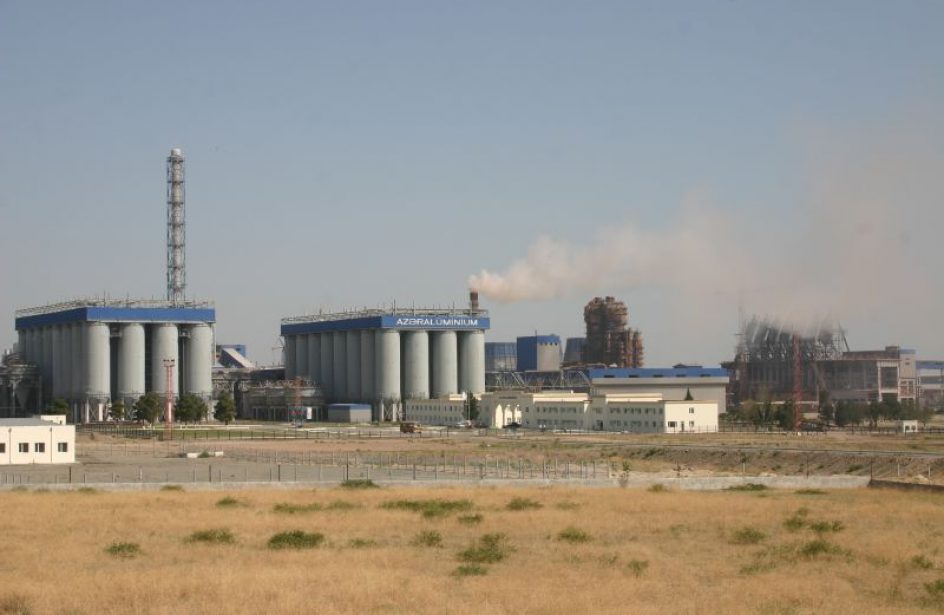By LADA YEVGRASHINA
BAKU
Azerbaijan may be mostly associated with oil and gas, but it is out to change the perception that this is all it offers. Agriculture and renewable energy- offshore Caspian Sea wind farms – are high on the list.
Though it may sound less flashy than, for instance, financial services or niche tourism – another area is metallurgy, with aluminium as a prime example, Azerbaijan has been a long-time producer of metals – primarily to support its oil extraction activities.
In the Soviet era, such gritty industries were regarded as sacred pieces of the country’s clunky economy.
And those who worked in them were well paid by Communist standards, so much that they attracted people from all over the USSR – regarded as vital to the country’s well-being and national security.
Azerbaijan produced molybdenum, iron ore, and even small amounts of gold.
One element, however, at the time was key due to its multitude of applications.
Deeply sought after was aluminium, just as the space race was getting underway and needed for aerospace applications – as well as baking sheets to insulation. Azerbaijan hosted the only plant in the region to produce it in refined forms.
The versatile metal was first processed at a plant in the city of Sumgait – just north of the capital Baku – established in 1949, and by 1955 it was operating at full capacity.
As typified such Soviet entities, the Sumgait facility was awash with heroic murals of workers, and it attracted them from all over due to high relative wages. On the flip side, the work could be arduous and dangerous.
Vera Kruchkova was one of them. A daughter of a sailor who arrived from Arkhangelsk, on the Arctic Ocean, in 1969 at the age of 22, she recalled those days.
“We were regarded as ‘udarniki’ (shock-workers). By the standards of the day, we were well paid, had special vacations, a special movie theatre,” said the now-retired 74-year-old. She met her husband, Volodya, also a Russian transplant, at the facility. In general, by Soviet standards, she had a basic, decent standard of living, including a government-sponsored two-room apartment.
She said there was even an unofficial factory “chant”:
We are like aluminium. Like our Motherland. We bend but can never be broken…
That plant still exists but functions at a fraction of its former capacity.
But Azerbaijan has not forgotten aluminium.
During the early years of independence from the Soviet Union, Azerbaijan was so inundated with oil companies seeking Caspian Sea riches and signing investment contracts for offshore oil and natural gas fields that many other economic activities were neglected.
Heavy industries, like aluminium production, were particularly ignored. However, in general, in the former Soviet Union, aluminium plants – some of the world’s biggest, for instance in Russia, like the Novokuznetsk (Siberia) factory — produced mega-millionaire or billionaire bosses after privatisations in the “wild 1990s”.
The focus on oil and gas extraction is often referred to as “Dutch Disease” because it can hyper-charge an economy or make some sectors non-competitive as hydrocarbon spoils price them out. This may have been only one part of the problem – outdated technology, neglect, or corruption are equal, if not more important, factors.
By 2011, the country has begun to awaken from its “oil-high” and gradually realise it had to diversify – either the oil and gas would one day run out, or the demand for it would.
NEW INVESTMENTS
In 2011, a new aluminium plant began work in the central city of Ganja, the country’s second-biggest. Though controlled by the Baku government, it is backed by a major Chinese investor, CNEC, a worldwide firm involved in aluminium instruments. CNEC handles many of the plant’s day-to-day operations, and it exported 97 percent of its 50,000 tonnes of production in 2020.
But according to an official document obtained by the Tribune, the government aims to triple aluminium output in the coming years.
This target will be met, according to sources, by concluding a joint venture with the German company Achenbach Buschhütten GmbH & Co. KG of Kreuztal. The deal, according to sources, is in its final stages of negotiation.
The factory would be adjacent to the present facility and produce 105,000 tonnes of refined aluminium per year.
Achenbach Buschhütten GmbH & Co. KG has extensive experience in constructing and modernising complex plants to produce non-ferrous metal and aluminium alloys for a wide array of uses, including the auto industry.
RAW MATERIAL ISSUES
Azerbaijan has produced bauxite – the main component of alumina – (the raw material for making aluminium) for 90 years, mostly from a quarry near Ganja. But increasing levels of sulfuric acid – possibly due to shoddy Soviet-era practices – have made the source largely unusable.
International firm Deloitte & Touche is preparing a feasibility study for restoring operations of the Ganja alumina refinery.
The headlong drive to make Azerbaijan an aluminium powerhouse has its sceptics. Among them is Dr Nazim Beydemirli, an expert on metallurgy. He says that the fact that present bauxite sources are being depleted or degraded makes it highly likely that the raw material will have to be imported, as it is now. He noted that it has been a long time since the Soviet supply chain that supplied reliable, high-quality inputs ceased to exist.
“The aluminium industry requires large investments, nearby sources of raw materials, and solutions to major environmental problems. Aluminium production is profitable only if these issues are taken into account,” he said. But he added that it was theoretically possible the industry would still survive with foreign technology.
And economist Fuad Alizadeh noted that given the great demand for aluminium globally (its prices are at all-time highs), profitability was not so far-fetched.
“The (existing) enterprise uses imported raw materials but still manages to make a profit due to high world demand. If the new plant is built, it can only add to that,” Alizadeh told the Tribune.

